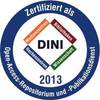Preview |
PDF, English
- main document
Download (37MB) | Lizenz:  Creative Commons Attribution-NonCommercial-NoDerivatives 3.0 Germany Creative Commons Attribution-NonCommercial-NoDerivatives 3.0 Germany
|
Abstract
Adaptive radiotherapy relies on daily imaging to capture anatomical changes during treatment, yet current modalities such as cone-beam CT (CBCT) and adaptation techniques using deformable image registration (DIR) occasionally lack the required accuracy. CBCT improvements in acquisition and reconstruction remain limited in routine use, while DIR struggles with large anatomical changes and lacks robust quality assurance. These shortcomings motivate the search for alternative adaptation approaches. As a potential solution, this thesis investigates synthetic CT (synCT) images generated using a CycleGAN network. SynCTs demonstrated improved image quality compared with CBCT and closer agreement with daily anatomy than DIR-based CT, supporting their use in clinically relevant tasks. Treatment planning on synCTs achieved similar target coverage and sparing of organs at risk to other adaptation methods, and enabled training of organ at risk segmentation networks in the absence of high-quality annotated CBCT datasets. These findings suggest that deep learning-based synCT images can strengthen adaptive radiotherapy workflows by overcoming several limitations of existing methods. While further validation on larger and more diverse patient cohorts is needed, synCT demonstrates potential as a clinically useful modality, bridging the gap between current practice and the goal of reliable patient-specific daily treatment adaptation.
| Document type: | Dissertation |
|---|---|
| Supervisor: | Jäkel, Prof. Dr. Oliver |
| Place of Publication: | Heidelberg |
| Date of thesis defense: | 17 October 2025 |
| Date Deposited: | 06 Nov 2025 12:58 |
| Date: | 2025 |
| Faculties / Institutes: | The Faculty of Physics and Astronomy > Institute of Physics |
| DDC-classification: | 500 Natural sciences and mathematics 530 Physics 600 Technology (Applied sciences) 610 Medical sciences Medicine |
| Controlled Keywords: | Computertomografie, Strahlentherapie, Künstliche Intelligenz |









